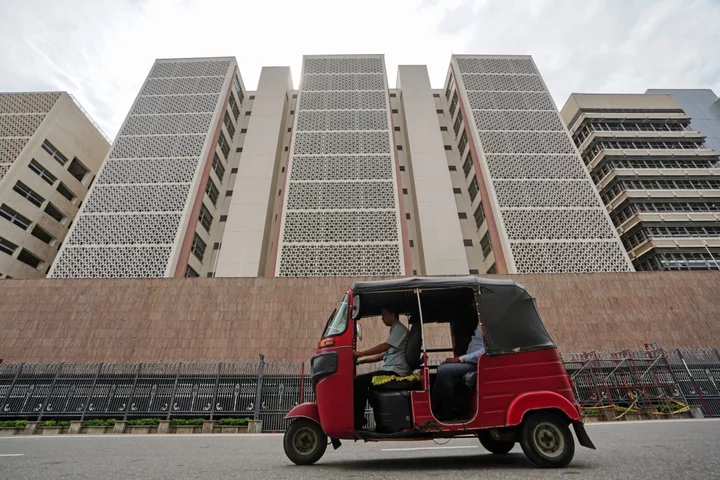US sends Ukraine controversial depleted uranium weapons that can pierce tank armour
Ukraine will be armed with depleted uranium anti-tank rounds that can aid its troops in piercing Russian tanks, said the Pentagon. The controversial 120mm anti-tanks shells will be used to boost the performance of 31 M1A1 Abram tanks the US will give Ukraine in the fall. The US is looking to aid Kyiv in dismantling Russian lines in eastern, northeastern and southern regions amid a simmering counteroffensive by the Ukrainians. The rounds, developed by the US during the Cold War, have previously destroyed Soviet tanks, including the decades old T-72 tanks dispatched by Moscow in the continuing war. The 46th drawdown of military equipment from the Department of Defence includes additional air defence equipment, artillery rounds and anti-tank weapons, and was announced shortly after Secretary of State Antony Blinken met with his Ukrainian counterpart and foreign minister Dmytro Kuleba on Wednesday. “We want to make sure that Ukraine has what it needs not only to succeed in the counteroffensive but has what it needs for the long term to make sure that it has a strong deterrent, strong defence capacity so that, in the future, aggressions like this don’t happen again,” Mr Blinken said in a statement before the two leaders met. The UK had also announced in March that it would give depleted uranium rounds to Ukraine, leaving Russia fuming and falsely claiming they had provided nuclear components. On Thursday, Russia snapped at Washington and called the latest military aid of depleted uranium a “criminal act” beyond just escalation. “It is a reflection of Washington’s outrageous disregard for the environmental consequences of using this kind of ammunition in a combat zone. This is, in fact, a criminal act, I cannot give any other assessment,” said Russian deputy foreign minister Sergei Ryabkov. He also reiterated previous warnings by Russia about the risk of a nuclear war, because of what he called Western “pressure” on Moscow. “Now this pressure is dangerously balancing on the brink of direct armed conflict between nuclear powers,” he said. Russia has deployed hypersonic missiles to thermobaric weapons on civilian targets in its full-scale invasion of Ukraine which has continued for more than 20 months now. Officials in Moscow have never taken responsibility for explaining using ballistic Kinzhal missiles, a barrage of which was fired on Ukraine in March this year. The missile has a range of up to 2,000km (about 1,250 miles) and flies at 10 times the speed of sound, making it hard to intercept. In April this year, the British defence ministry said Russia is likely handing over thermobaric multiple launch rocket systems to its elite airborne forces, suggesting its use in the continuing war. Thermobaric weapons, fired using the multiple launch rocket systems, are considered to be some of the most brutal war weapons in existence. “The highly destructive TOS-1A, which Russia designates as a ‘heavy flamethrower’, is typically operated by Russia’s specialist Chemical, Biological and Radiological Protection Troops in Ukraine, and has not previously been formally associated with the VDV,” the ministry had said. Russia had admitted to using the flamethrower weapon in March last year. Also known as vacuum bombs, they suck in oxygen and generate a powerful explosion that can have a devastating impact on victims – especially in an enclosed space. In another attack, Russia used cluster bombs which killed a child and two adults hiding in a pre-school in northeastern Ukraine. While the depleted uranium rounds retain some radioactive properties, they can’t generate a nuclear reaction like a nuclear weapon would, RAND nuclear expert and policy researcher Edward Geist said. The Pentagon has defended the use of the munitions. The US military “has procured, stored, and used depleted uranium rounds for several decades, since these are a longstanding element of some conventional munitions,” Pentagon spokesman Marine Corps Lt Col Garron Garn said in a statement in March. Read More The Body in the Woods | An Independent TV Original Documentary The harrowing discovery at centre of The Independent’s new documentary UN nuclear watchdog report seen by AP says Iran slows its enrichment of near-weapons-grade uranium Ukraine war: US send depleted uranium to Kyiv after blast near Russia military base Greek shipper pleads guilty to smuggling Iranian crude oil and will pay $2.4 million fine
Ukraine will be armed with depleted uranium anti-tank rounds that can aid its troops in piercing Russian tanks, said the Pentagon.
The controversial 120mm anti-tanks shells will be used to boost the performance of 31 M1A1 Abram tanks the US will give Ukraine in the fall.
The US is looking to aid Kyiv in dismantling Russian lines in eastern, northeastern and southern regions amid a simmering counteroffensive by the Ukrainians.
The rounds, developed by the US during the Cold War, have previously destroyed Soviet tanks, including the decades old T-72 tanks dispatched by Moscow in the continuing war.
The 46th drawdown of military equipment from the Department of Defence includes additional air defence equipment, artillery rounds and anti-tank weapons, and was announced shortly after Secretary of State Antony Blinken met with his Ukrainian counterpart and foreign minister Dmytro Kuleba on Wednesday.
“We want to make sure that Ukraine has what it needs not only to succeed in the counteroffensive but has what it needs for the long term to make sure that it has a strong deterrent, strong defence capacity so that, in the future, aggressions like this don’t happen again,” Mr Blinken said in a statement before the two leaders met.
The UK had also announced in March that it would give depleted uranium rounds to Ukraine, leaving Russia fuming and falsely claiming they had provided nuclear components.
On Thursday, Russia snapped at Washington and called the latest military aid of depleted uranium a “criminal act” beyond just escalation.
“It is a reflection of Washington’s outrageous disregard for the environmental consequences of using this kind of ammunition in a combat zone. This is, in fact, a criminal act, I cannot give any other assessment,” said Russian deputy foreign minister Sergei Ryabkov.
He also reiterated previous warnings by Russia about the risk of a nuclear war, because of what he called Western “pressure” on Moscow.
“Now this pressure is dangerously balancing on the brink of direct armed conflict between nuclear powers,” he said.
Russia has deployed hypersonic missiles to thermobaric weapons on civilian targets in its full-scale invasion of Ukraine which has continued for more than 20 months now.
Officials in Moscow have never taken responsibility for explaining using ballistic Kinzhal missiles, a barrage of which was fired on Ukraine in March this year.
The missile has a range of up to 2,000km (about 1,250 miles) and flies at 10 times the speed of sound, making it hard to intercept.
In April this year, the British defence ministry said Russia is likely handing over thermobaric multiple launch rocket systems to its elite airborne forces, suggesting its use in the continuing war.
Thermobaric weapons, fired using the multiple launch rocket systems, are considered to be some of the most brutal war weapons in existence.
“The highly destructive TOS-1A, which Russia designates as a ‘heavy flamethrower’, is typically operated by Russia’s specialist Chemical, Biological and Radiological Protection Troops in Ukraine, and has not previously been formally associated with the VDV,” the ministry had said.
Russia had admitted to using the flamethrower weapon in March last year. Also known as vacuum bombs, they suck in oxygen and generate a powerful explosion that can have a devastating impact on victims – especially in an enclosed space.
In another attack, Russia used cluster bombs which killed a child and two adults hiding in a pre-school in northeastern Ukraine.
While the depleted uranium rounds retain some radioactive properties, they can’t generate a nuclear reaction like a nuclear weapon would, RAND nuclear expert and policy researcher Edward Geist said.
The Pentagon has defended the use of the munitions.
The US military “has procured, stored, and used depleted uranium rounds for several decades, since these are a longstanding element of some conventional munitions,” Pentagon spokesman Marine Corps Lt Col Garron Garn said in a statement in March.
Read More
The Body in the Woods | An Independent TV Original Documentary
The harrowing discovery at centre of The Independent’s new documentary
UN nuclear watchdog report seen by AP says Iran slows its enrichment of near-weapons-grade uranium
Ukraine war: US send depleted uranium to Kyiv after blast near Russia military base
Greek shipper pleads guilty to smuggling Iranian crude oil and will pay $2.4 million fine









